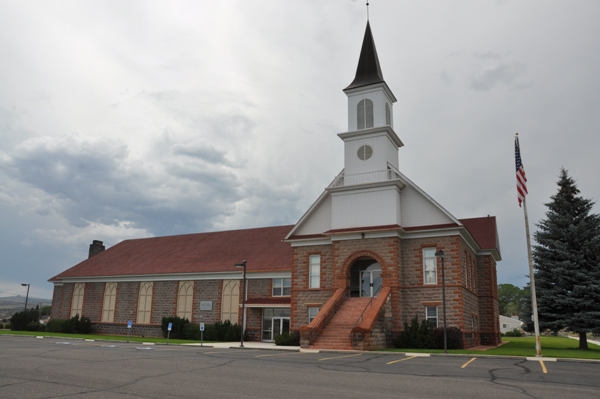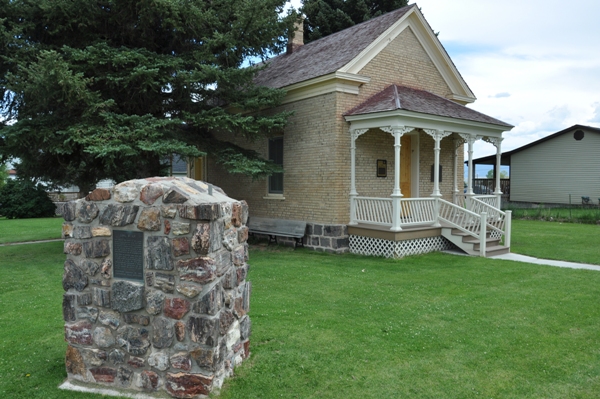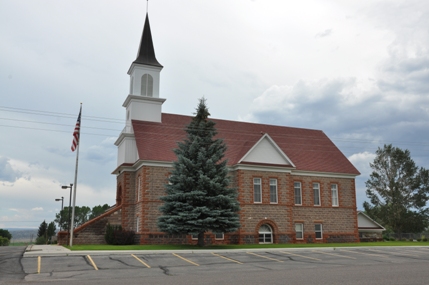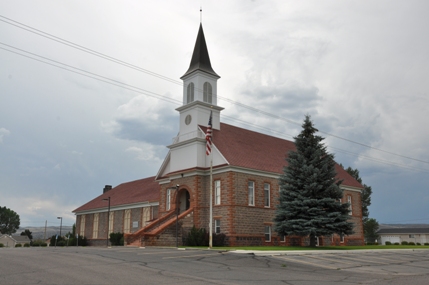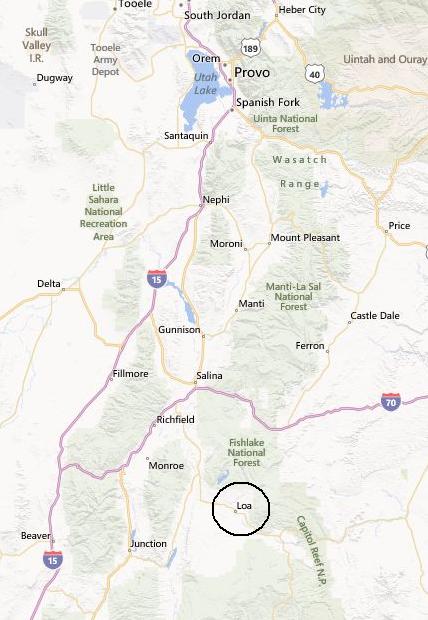www.WillhiteWeb.com
Loa Stake Tabernacle - Wayne County Stake Tabernacle
Originally, the Wayne Stake Tabernacle, today its called the Loa Stake Tabernacle. It is the most recognized building in the valley, viewable for miles. Ground was broken for the Wayne Stake Tabernacle in fall 1906. A team of horses was used because the ground was already frozen at the time. The Corner Stone was laid on November 23, 1906 and the building was completed and dedicated by October 24, 1909 after 3 years of construction. Local settlers used their skills to cut and hewn lumber and quarry three colors of native rock. The steeple bell was ordered from Europe. The main worship hall's interior was lined with a balcony and fronted by elevated choir seats, resembling the Tabernacle on Temple Square. It was dedicated by President Joseph F. Smith. Over the years, there have been four improvements to the building which included a cultural hall, . The last was when it was re-dedicated March 31, 1991 by stake Pres. Scott L. Durfey. The building had major expansion that included additional ward and stake offices and classrooms.
Loa Tithing Office
Built in 1897, at a cost of $1000, the Loa Tithing Office is historically significant as one of 32 well preserved tithing buildings in Utah that were part of the successful "in kind" tithing system of The Church of Jesus Christ of Latter-day Saints (Mormons) between the 1850's and about 1910. Tithing lots, which usually included an office and several auxiliary structures, were facilities for collecting, storing, and distributing the farm products that were donated as tithing by church members in the cash-poor agricultural communities throughout the state. Tithing offices were a vital part of almost every Mormon community, serving as local centers of trade, welfare assistance, and economic activity. This building is also architecturally significant as one of ten existing examples of Utah's tithing offices which were designed in the Greek Revival style. Peter Christensen, who constructed the building, also fired the brick in a kiln located between the nearby town of Lyman and Horse Valley Ranch. The woodwork on the building was carved by Benjamin E Brown, a local craftsman. In 1972 the building was sold to the local chapter of the Daughters of Utah Pioneers, using it to display pioneer relics and hold meetings.
Loa, Utah
Loa townsite was named in 1876, after Mauna Loa, the beautiful 13,000 foot high volcanic mountain on the Island of Hawaii, by Franklin Wheeler Young, a missionary to the Sandwich Islands (Hawaii) in 1856, and was dedicated by patriarch Elias Hicks Blackburn of Loa on November 1, 1891. This piece of pahoehoe lava from the 9,500 foot level of Mauna Loa was obtained in 1933 by Eldon Putnam Morrell, a native of Loa, and his wife Ruth Jorgensen Morrell, missionaries to Hawaii in 1921 and 1925 respectively, and was donated through the D.U.P. to the town of Loa.
